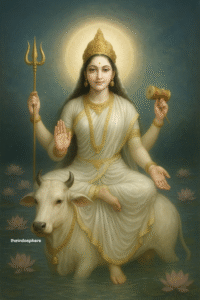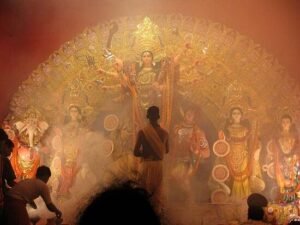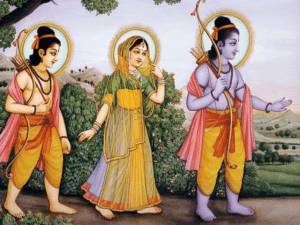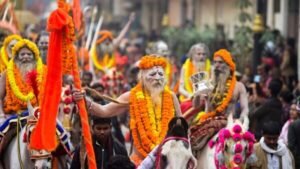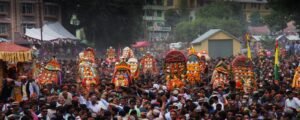Dussehra, also known as Vijayadashami, is one of India’s most revered and widely celebrated festivals. It marks the ultimate victory of good over evil, commemorating the triumph of righteousness over wrongdoing. Celebrated on the tenth day of the Hindu lunar month of Ashvin (September-October), Dussehra is a vibrant festival that combines mythology, cultural rituals, and community celebration.
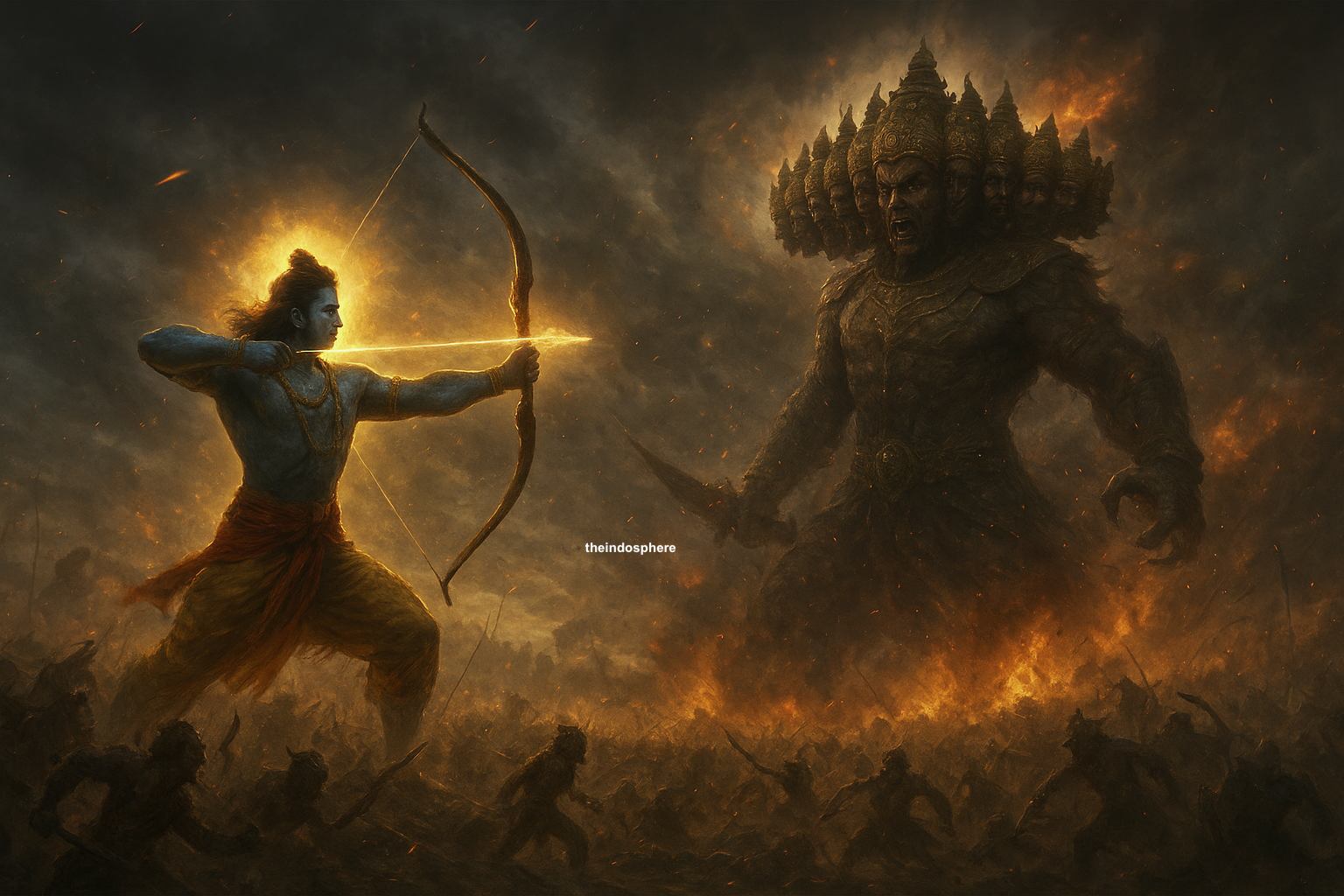
While the essence of Dussehra remains the defeat of evil, the legends and customs vary greatly across different parts of India. In some regions, the focus is on Lord Rama’s victory over Ravana, while in others, it highlights the powerful Goddess Durga defeating the demon Mahishasura. Regardless of the regional differences, the festival stands as a powerful reminder of the importance of virtue and righteousness.
Origins of Dussehra: Two Major Legends
The Victory of Lord Rama Over Ravana
In northern, central, and western India, Dussehra is primarily linked to the epic Ramayana, which tells the story of Lord Rama. After Ravana, the ten-headed demon king of Lanka, abducted Sita (Rama’s wife), Rama embarked on a fierce battle. Aided by his loyal brother Lakshmana, the divine monkey-god Hanuman, and an army of monkeys, Rama fought and eventually defeated Ravana after ten days of intense battle.
On the tenth day, Lord Rama killed Ravana, symbolizing the victory of good over evil. This day is celebrated as Dussehra or Vijayadashami, marking not only the destruction of a physical demon but also the defeat of internal evils like pride, arrogance, and greed.
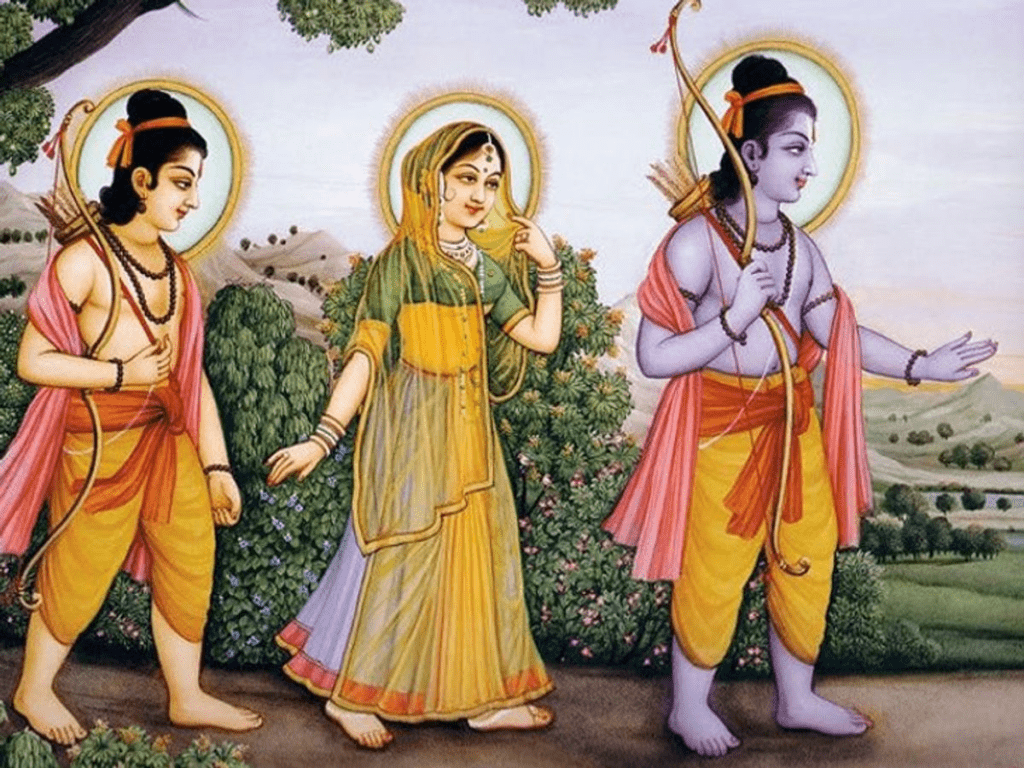
The Triumph of Goddess Durga Over Mahishasura
In the eastern regions of India, especially in West Bengal, Assam, and Odisha, Dussehra marks the culmination of Durga Puja. According to Hindu mythology, the buffalo-headed demon Mahishasura gained strength and became nearly invincible, threatening the balance of the universe. The gods, in their desperation, created Goddess Durga to defeat him. Armed with weapons from the gods, Durga fought Mahishasura for nine days, slaying him on the tenth day.
The Symbolism of Dussehra: More Than a Celebration
Dussehra is not just about the retelling of ancient mythologies. The festival carries deep moral and philosophical significance. It serves as a metaphor for the constant battle between good and evil within individuals and society. The celebration encourages people to reflect on their lives, identifying the “Ravana” within—anger, pride, lust, and other negative traits—and striving to overcome them.
Dussehra also serves as a larger social commentary, reminding society to root out injustice and wrongdoings. It encourages everyone to stand for truth and justice, no matter how overwhelming the evil might seem.
Dussehra Across India: Diverse Celebrations, Shared Values
While the core message of Dussehra remains the same, its celebrations differ across the country, reflecting the rich cultural diversity of India.
Northern and Western India: Ramleela and Ravana Dahan
In northern cities like Delhi, Varanasi, Ayodhya, and Lucknow, Dussehra is marked by the performance of Ramleela, an enactment of episodes from the Ramayana. These open-air plays, often performed in large grounds, culminate with the Ravana Dahan, the burning of towering effigies of Ravana, Kumbhakarna (Ravana’s brother), and Meghnath (Ravana’s son).

The spectacle of these burning effigies, filled with firecrackers, draws large crowds, symbolizing the destruction of evil. Alongside these performances, fairs, food stalls, and cultural events add to the festive atmosphere.

Eastern India: Durga Puja and Bijoya Dashami
In the eastern states, Dussehra coincides with the conclusion of Durga Puja, a grand celebration dedicated to Goddess Durga. The last day of Durga Puja, called Bijoya Dashami, sees the immersion of beautifully crafted idols of Durga into rivers, symbolizing her return to her celestial home.
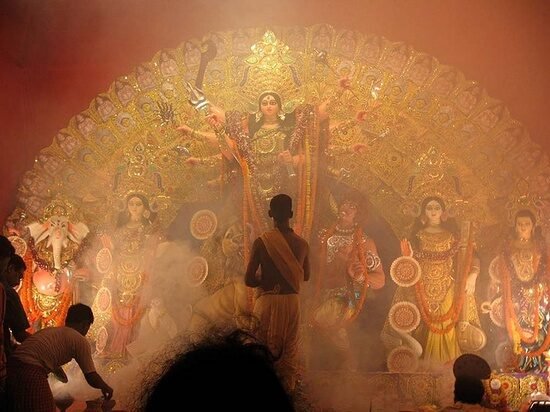
People participate in Sindoor Khela, where women smear each other with vermillion, symbolizing good luck and marital prosperity. The immersion procession is a highly emotional moment, as devotees bid farewell to the Goddess with prayers for her return next year.
Southern India: Mysore Dasara and Golu
In the southern state of Karnataka, particularly in Mysore, Dasara is a regal affair. The Mysore Palace is illuminated, and a grand procession led by an ornately decorated elephant carrying the idol of Goddess Chamundeshwari (a form of Durga) moves through the streets, accompanied by musicians, dancers, and various cultural performers.
In Tamil Nadu, households set up Bommai Golu, where dolls and figurines of gods, goddesses, and various scenes are displayed on steps. Friends and families visit each other to admire these displays, offering prayers and sharing festive sweets.
Western India: Garba and Dandiya
In Gujarat and parts of Maharashtra, the celebration of Dussehra is entwined with the vibrant Navaratri dances—Garba and Dandiya Raas. People gather in large groups, dressed in colorful attire, to perform traditional dances around a central image of Goddess Durga.
The rhythmic movements and vibrant music create an electric atmosphere, transforming Dussehra into a joyful celebration of life and devotion.
Contemporary Relevance: Dussehra in the Modern World
Even in modern times, Dussehra holds immense cultural and spiritual relevance. The festival serves as a reminder to uphold the principles of truth and righteousness, especially in a world increasingly influenced by materialism and moral ambiguity.
A Time for New Beginnings
Dussehra is considered an auspicious time for starting new ventures or making significant purchases. Many businesses launch new projects, people buy new vehicles, and students begin new courses of study, marking Dussehra as a time of fresh starts and optimism.
Strengthening Community Bonds
Dussehra also brings communities together, fostering a sense of shared identity and cultural pride. Families and friends gather for feasts, exchange gifts, and participate in collective celebrations. This aspect of Dussehra enhances its importance as not just a religious festival, but a vital social occasion.
The Eternal Message of Dussehra
Dussehra, in its many forms, is a festival that transcends the boundaries of religion, region, and culture. It embodies the timeless truth that good will always triumph over evil, no matter how formidable the challenge. Whether through the burning of Ravana’s effigy, the immersion of Durga’s idols, or the joyous community dances, the festival reinforces the core values of courage, virtue, and the unwavering pursuit of justice.
As one of the most significant festivals in Hindu culture, Dussehra is a celebration of life’s victories—both big and small—and a powerful reminder to confront and overcome the darkness within and around us.

